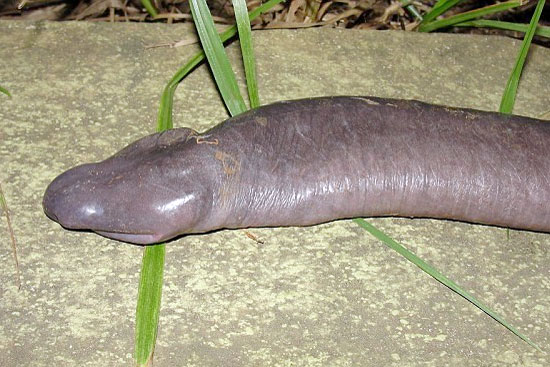
Inia araguaiaensis
Researchers have discovered a new species of river dolphin from the Amazon.
Writing in the journal Plos One, scientists led by Tomas Hrbek of Brazil’s Federal University of Amazonas formally describe Inia araguaiaensis, a freshwater dolphin that inhabits the Araguaia River Basin. It is the first true river dolphin discovered since 1918.
The discovery came after Hrbek and colleagues noticed that a group of river dolphins in the Araguaia was isolated from other Amazon dolphins by a series of rapids. Conducting genetic analysis, the researchers found the Araguaian boto (Inia araguaiaensis) to be distinct enough from other Amazon dolphins to be classified as a different species. The scientists estimate that the dolphin species diverged some two million years ago, corresponding to the separation of the Araguaia-Tocantins basin from the Amazon basin.
The differences between the Araguaian boto and their closest relatives, Inia geoffrensis and Inia boliviensis, extend beyond genetics. The Araguaian boto is smaller, has a different number of teeth, and has a wider skull.

Distribution map of all known species and subspecies of Amazon river dolphin Inia.
The new discovery has immediate implications for conservation. While river dolphins are generally not hunted directly in most of the Amazon due to local taboos, they do face risks from hydroelectric projects, pollution from urban areas and agriculture, boat traffic, and accidental bycatch. Moreover the Araguaian boto population is apparently quite low, according to the new research, which estimates the number of individuals at around 1,000.
“Populations of the middle and upper Tocantins River are fragmented by six hydroelectric dams, not including the Tucurui dam, and are likely to have very few individuals,” the authors write. “Since the 1960’s the Araguaia River basin has been experiencing significant anthropogenic pressure via agricultural and ranching activities, and the construction of hydroelectric dams, all of which have had negative effects on many biotic and abiotic aspects of the functioning of the Araguaia River ecosystem which I. araguaiaensis inhabits. Similarly I. araguaiaensis in the Tocantins River is affected by agricultural and industrial development, and is fragmented into isolated populations by hydroelectric dams. Interpreting these data using IUCN criteria, Inia araguaiaensis should minimally be considered vulnerable (VU Red List category).”
A vulnerable listing may force policymakers in Brazil to consider the species’ plight when planning new industrial developments in the basin. Brazil is currently in the midst of a dam-building spree throughout the Amazon Basin, which environmentalists warn could disrupt the ecological functioning of the world’s largest river system.
CITATION: Hrbek T, da Silva VMF, Dutra N, Gravena W, Martin AR, et al. (2014) A New Species of River Dolphin from Brazil or: How Little Do We Know Our Biodiversity. PLoS ONE 9(1): e83623. doi:10.1371/journal.pone.0083623
Related articles
DNA tests reveal new dolphin species (photos)
.150.jpg)
(10/30/2013) With the help of DNA tests, scientists have declared a new dolphin species that dwells off the coast of northern Australia. The discovery was made after a team of researchers looked at the world’s humpback dolphins (in the genus Sousa), which sport telltale humps just behind their dorsal fins. While long-known to science, the new, as-yet-unnamed species was previously lumped with other humpback dolphins in the Indo-Pacific region.
‘Penis snake’ discovered in Brazil is actually a rare species of amphibian

(08/01/2012) A creature discovered by engineers building a dam in the Amazon is a type of caecilian, a limbless amphibian that resembles an earthworm or as some are noting, part of the male anatomy. The animal was discovered while draining a portion of the Madeira River — a major tributary of the Amazon — for a controversial hydroelectric project. Six individuals were found according to biologist Julian Tupan, who identified the species as Atretochoana eiselti.